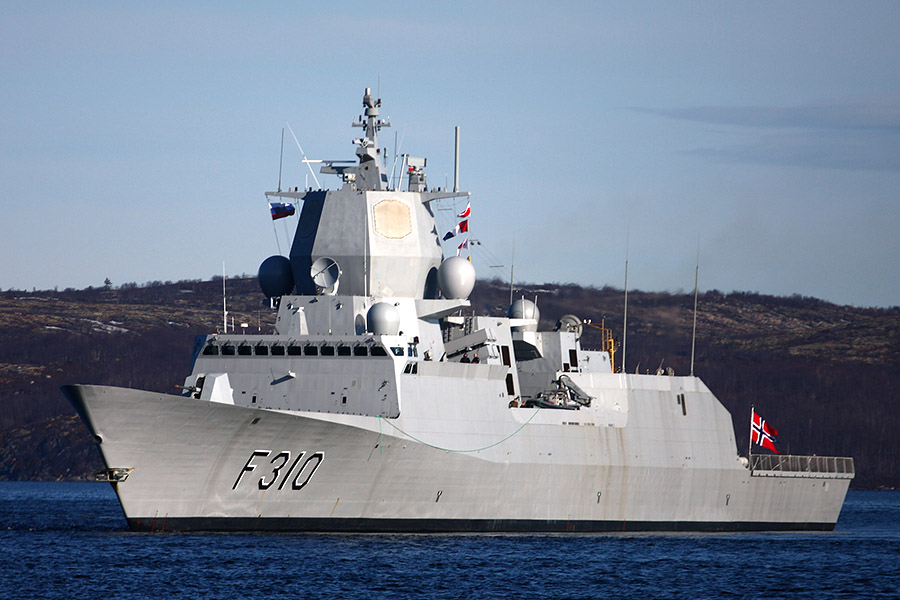
Secretary of Defense Chuck Hagel’s recent direction to the Navy to develop proposals for a “capable and lethal small surface combatant, generally consistent with the capabilities of a frigate” could have a major affect on several Navy programs.
The U.S. Navy has only 12 frigates in commission—four of them manned mainly by reservists. This compares with almost 100 frigates in commission when the Cold War ended in December 1991. Further, the surviving frigates no longer have critical anti-aircraft/anti-ship missiles.
Frigate-type ships are extremely useful for a variety of operations in crises, low- and medium-threat, escort, blockade, and presence operations. Today the U.S. Navy must allocate higher-capability Aegis cruisers and destroyers to those roles. Based on historical ship classes, developing a new frigate design, gaining approval from various agencies and Congress, awarding contracts, and building the first ship probably would take 12 years—or longer––and cost upwards of $1.5 billion for the lead ship.
A solution may be found in Hagel’s memorandum of Feb. 24, which put a temporary hold on the Navy’s littoral combat ship (LCS) program at the 32 ships now built, under construction, or under contract. The memo stated:
Submit to me, in time to inform the PB 2016 budget deliberations [i.e., summer 2014], alternative proposals to procure a capable and lethal small surface combatant, generally consistent with the capabilities of a frigate. Options considered should include a completely new design, existing ship designs (including the LCS), and a modified LCS. Include target cost, mission requirements, sensors and weapons requirements and required delivery date.
In response to the Hagel memo, the Navy has established a Small Surface Combatant Task Force (SSCTF) to assess the issues and to provide detailed options to service leaders on future alternative ship designs. The three specific ship options for a capable and lethal “small surface combatant” that the SSCTF is addressing are:
- A new ship design
- Existing ship design (including the LCS)
- A modified LCS design
For the time being the last option appears to offer the most promising course for the Navy to develop a small, lethal, and affordable surface combatant. With a full-load displacement of almost 3,000 tons the LCS is smaller than most foreign ships rated as frigates. (The current U.S. frigates of the Oliver Hazard Perry class displace approximately 4,000 tons full load.)
However, the LCS is a “platform” intended to embark mission modules; thus, the LCS is designed specifically to take aboard weapon and sensor “packages.” The USS Freedom (LCS-1) design can accommodate 180 metric tons for the baseline mission package.
Further, modern weapons and sensors are more compact and efficient than those previously installed in existing frigate-type ships. Thus, an existing LCS design could be fitted with today’s most advanced systems to provide equivalent capabilities found aboard modern, multi-mission frigates.
During his late-March 2014 testimony before the Senate Armed Services Committee, Chief of Naval Operations, Adm. Jonathan Greenert, acknowledged that the next ship after LCS could look quite different although perhaps using the same LCS hull. The CNO compared it with the evolution of the Navy’s F/A-18 Hornet fighter-attack aircraft that was followed by the F/A-18E/F Super Hornets, and the EA-18 Growler electronic warfare aircraft. While each of the suggested options could ultimately meet Secretary Hagel’s direction, a modified Freedom design—with existing hull, machinery, and electrical features held constant—most likely offers the most cost-effective, timely, and straightforward approach to redressing the Navy’s requirement for a frigate-type warship.
The sensors and weapons that are envisioned for a “frigate-like” upgrade to the LCS all are in operational service or advanced development. For example, the lightweight SPY-1F multifunction radar is now installed in the Norwegian Fridtjof Nansen-class frigates. Similarly, the LCS is well suited for installation of a Vertical-Launching System (VLS) that could accommodate a mix of surface-to-air and anti-ship missiles. Such VLS batteries are found in several foreign frigates, providing a potent defensive and offensive capability. Advanced anti-submarine sonar, additional radars, electronic warfare suites, and other systems for a multi-mission LCS are readily available. An upgraded LCS could retain the large hangar and flight deck area to embark a MH-60 helicopter and various unmanned aerial vehicles (UAV).
In this context, most of the development and initial production costs for the upgraded LCS have already been paid. While both of the basic LCS designs—Freedom and Independence (LCS-2)—are suitable for upgrading, Lockheed Martin, team leader for the Freedom program, since 2008 has analyzed and developed ways to “beef up” the baseline LCS-1 variant. These efforts were undertaken in large part because of foreign interest in that ship and those nations’ desire for a more frigate like ship. While no foreign navy has initiated formal negotiations for either of the LCS designs, at least two countries have made serious inquiries to Lockheed Martin about procuring an upgraded LCS platform.
Accordingly, Lockheed Martin has undertaken detailed cost and technical analyses including tow-tank testing of a multi-mission Freedom-class LCS to be completed this year. Technical and engineering tradeoffs to determine the optimum mix of additional weapons, sensors, and other systems as well as a preliminary design have already been completed. Lockheed Martin indicates that a rough order-of-magnitude cost estimate is about $800 million for the “lead” multimission LCS-1 “frigate-type” warship.
Eric Labs from the Congressional Budget Office estimates that the LAMPS III version of the Oliver Hazard Perry-class (FFG-7) with no upgrades or modification would cost approximately $710 million in Fiscal Year 2014 dollars. The cost of a lead/improved FFG-7 is difficult to ascertain without definitive characteristics and systems and without knowing the size of the frigate buy, but a rough order-of-magnitude estimate is $1.3 billion for the lead ship (including certain design and research and development costs) with follow-on ships to cost approximately $900 million.
Potential systems envisioned to transform the Freedom from a baseline tailored/single-mission LCS into a multi-mission surface combatant include:
- 32-cell Mk 41 Vertical Launching System
- AN/SPY-1F (V) radar
- Baseline 9 version of Aegis combat system
- Evolved Sea Sparrow anti-air missile
- Standard SM-2 surface-to-air missile
- 76-mm OTA Melara rapid-fire gun (replacing the current
Mark 110 57mm gun) - MH-60R Seahawk helicopter and Fire Scout (or other) UAVs
- Longbow Hellfire anti-ship missile
- Passive and active electronic warfare systems
- Towed sonar array
If an upgraded multi-mission LCS design along these lines were to emerge from the Navy’s analysis as the leading contender for the future small surface combatant mission, then Hagel may want to inject some of those added/changed capabilities back into the current LCS program. These changes/upgrades could include additional ships to be procured beyond the 24 now in service, building, or under contract. A spiral-development risk-reducing effort could thus be implemented to ensure those LCS ships bought between the current 24-ship program and the start of a new effort are upgraded and constrained within a reasonable budget.
Thus, Hagel’s proposed “frigate-type” warship could provide the U.S. Navy with a much-needed combat platform, bring foreign navies into the program—which would drive down overall ship and system costs—and provide useful upgrades to the basic LCS effort.





